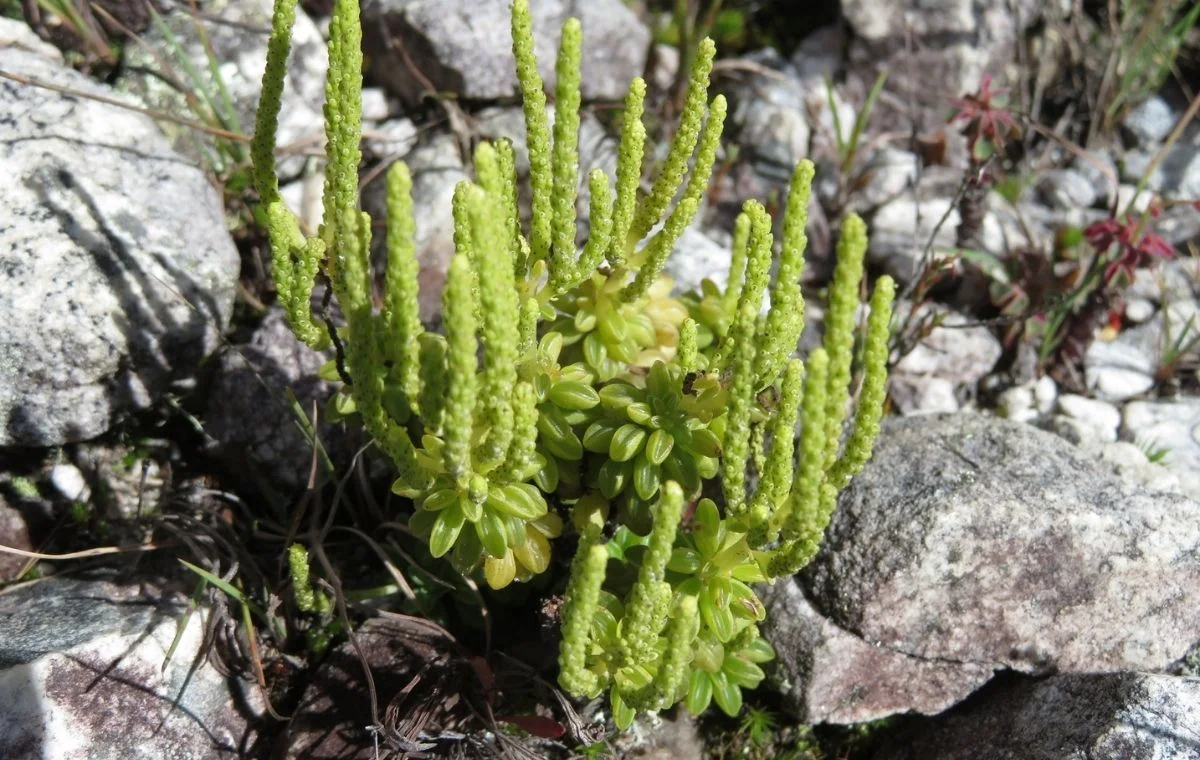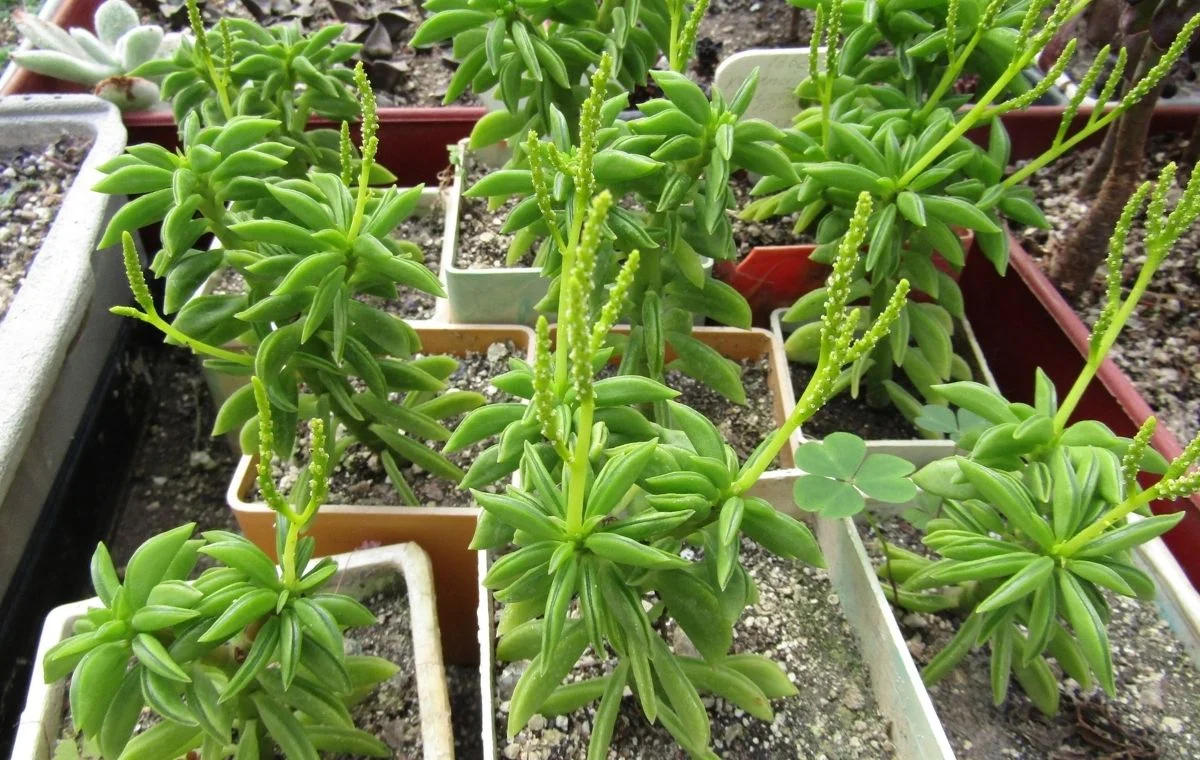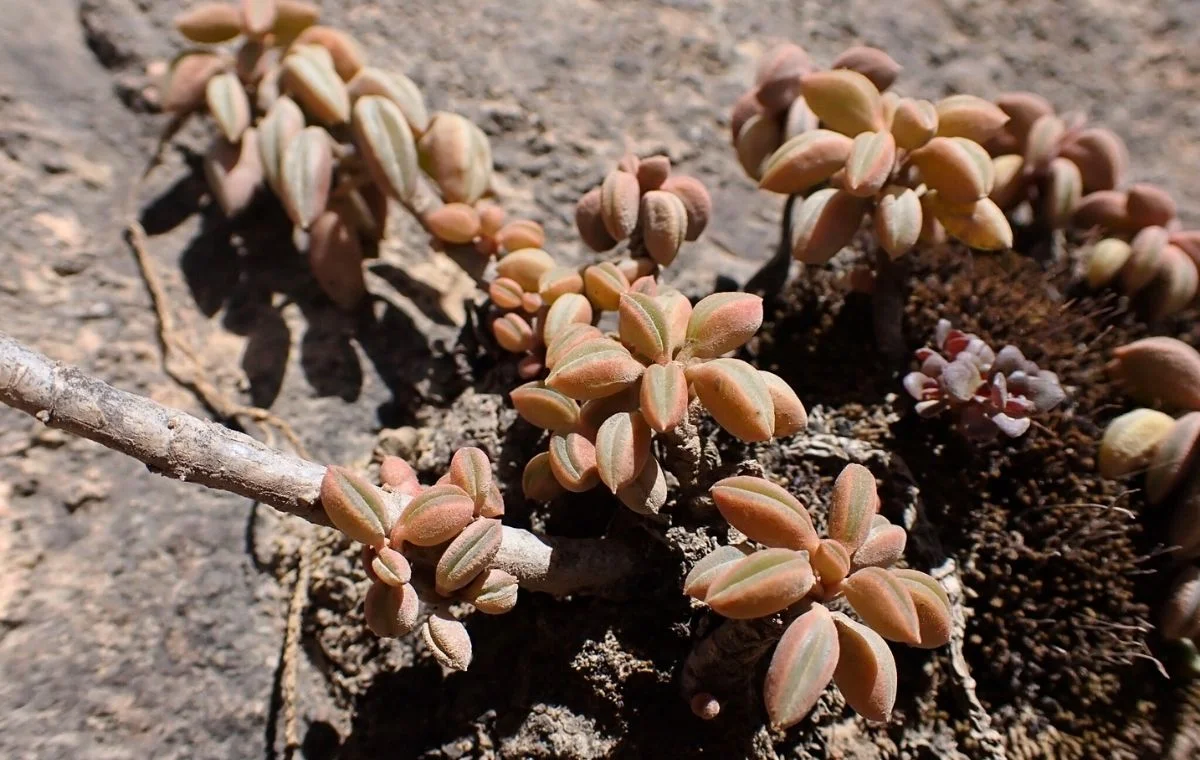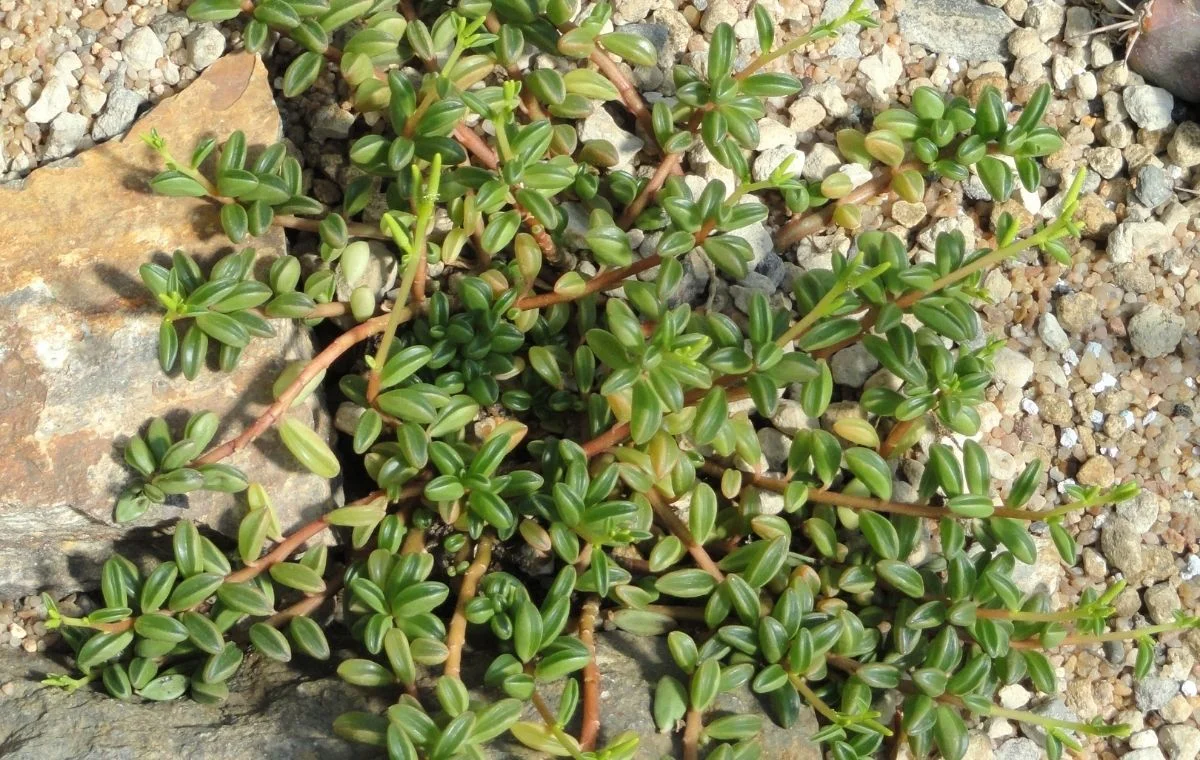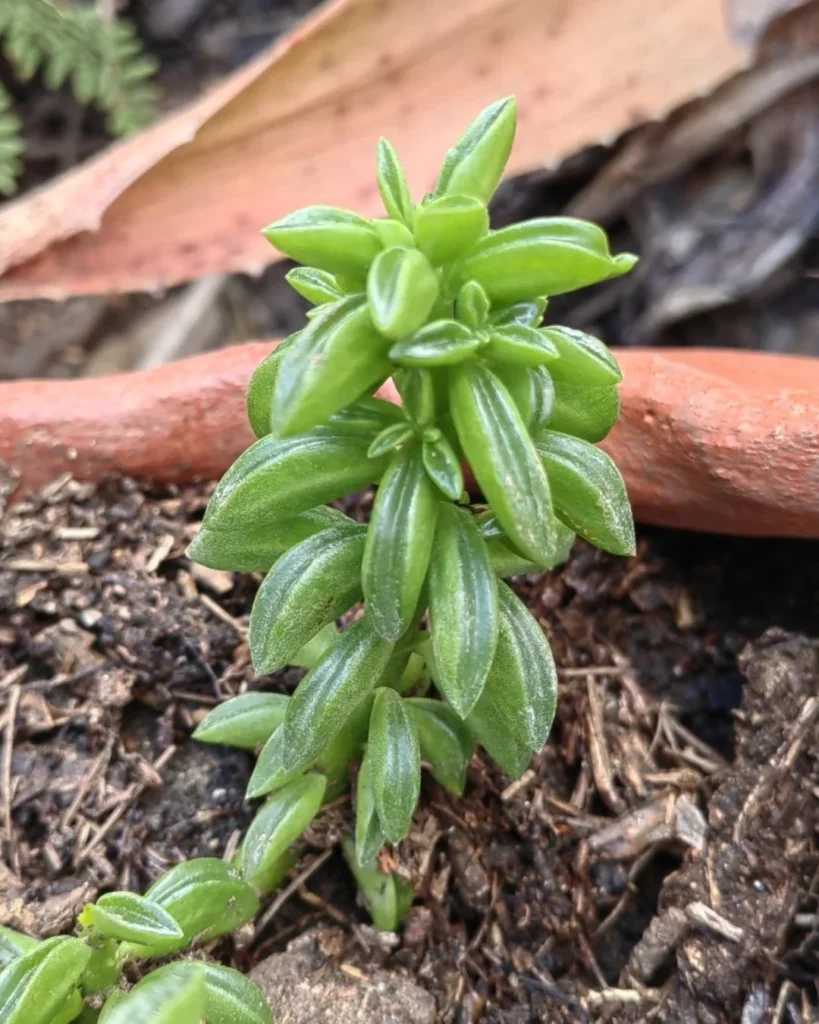The Taco Leaf Peperomia (Peperomia nivalis) is a succulent, perennial plant found in the Andean region, mainly in places like Cajamarca, La Libertad, Ancash, Lima, Arequipa, and Cuzco in Peru, typically between altitudes of 2000 to 3000 meters (6561 to 9842 feet) above sea level. Its habitat is characterized by very dry areas, where it grows close to the roots of trees and shrubs, in rocky soils, receiving filtered light through the canopies. In these regions, the climate is temperate and dry, with mild temperatures during the day and cold nights, skies covered for most of the year, and high humidity, but with low rainfall.
The genus name Peperomia comes from the Greek “peperi“, meaning pepper, and “homoios“, meaning similar. This is a reference to the fact that this genus has flowers similar to those of the peppers from the Piper genus, which are relatives and belong to the same Piperaceae family. The specific epithet nivalis, on the other hand, is a Latin word meaning “like the snow”, which may refer to the often somewhat pale coloring of some parts of the plant.
Herbaceous and creeping in form, Peperomia nivalis rarely exceeds a height of 25 cm (9.8 inches) and forms clumps that can reach 40-65 cm (15.7-25.6 inches) in diameter. Its stem is erect to prostrate, terete (cylindrical) and grey-brown in color, with alternate branching. The leaves are alternate, succulent, and bright green, with a curious lanceolate to dolabriform (axe-like) shape. They have an acute apex and cuneate base, being grooved on the upper part, with a transparent “V” or “U” shape reflecting the dark green interior of the leaf, while the lateral sides are light green to glaucous. This window that forms on the top of the leaves is an adaptation to reduce evapotranspiration, without harming photosynthesis. The curious shape of the leaves earns it common names like succulent boat, shell, or in Spanish, empanadas, tacos and quesadillas. Under stress conditions, such as in drier periods and with greater solar exposure, the plants develop interesting bronzed and reddish colors. When crushed or cut, the sap releases an aroma similar to anise.
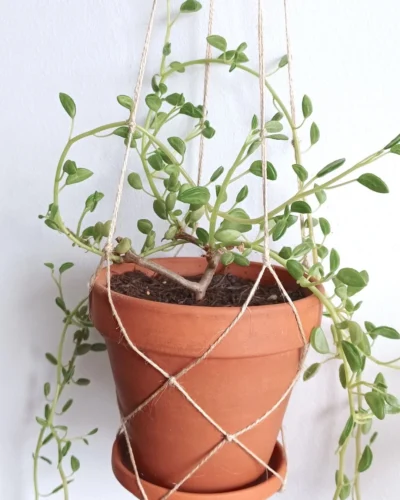
The inflorescence is a terminal panicle with 5 to 8 erect spikes, each with a basal lanceolate bract with two stamens and white or yellow anthers. The fruits are also globular, tiny, dark green to dark brown in color, with a papillose surface. It usually blooms in spring and summer, and the fruits ripen between summer and fall.
In addition to the type species, there are four known varieties:
- Peperomia nivalis f. diminuta, notably small in size, but with disproportionately large inflorescences.
- Peperomia nivalis var. compacta, with more rounded leaves, and compact, branched growth from the base. They are found in more exposed areas.
- Peperomia nivalis var. lepadiphylla, a plant with prostrate and hanging growth, and shorter, rounded leaves, similar to the string of turtles (Peperomia prostrata), or dolphin necklace (Senecio peregrinus).
- Peperomia nivalis var. sanmarcensis, with longer stems and thinner, redder leaves that appear more folded.
The Peperomia nivalis is a charming plant, ideal for collectors and indoor plant enthusiasts. It is perfect for terrariums, shade gardens, mini gardens, and winter gardens. Its small size and dense foliage make it ideal for composing details in low-maintenance plant arrangements. It is also popular in table arrangements and as a complement in succulent compositions in mixed pots. However, it is always necessary to think about using Peperomia nivalis in compositions with other succulents that have similar cultivation requirements, especially regarding light and water needs.
Although primarily an ornamental plant, Peperomia nivalis is used in traditional medicine in Peru. The leaves, roasted over fire, are compressed to extract drops used both in the treatment of otitis and conjunctivitis. The entire plant, when ground, is used as a topical plaster to relieve abdominal pain.
The Peperomia nivalis, with its succulent leaves and delicate flowers, is a delightful addition to any plant collection. Despite its relatively slow growth and cultivation requirements, its maintenance is relatively easy. Its unique beauty and curious foliage make it an excellent choice for interior decoration or the garden. By understanding its habitat and specific cultivation needs, you can enjoy the beauty of this unique plant for many years.
Cultivate it in partial shade or filtered light, like under the canopy of a tree or near an east-facing window. It enjoys direct sunlight in the early morning and late afternoon, but will suffer from excess light and heat during the hottest hours of the day. If you notice the spacing of the internodes, position the plant in a brighter location, as it is likely etiolating. Excessively stunted and reddish leaves, low growth, and even burns indicate that the plant is receiving too much light and heat.
Despite being a succulent, Peperomia nivalis fears excessive heat, which interrupts its growth. The ideal temperature for the development of this species is between 59 and 68°F (15 and 20°C). Similarly, it likes humidity, but detests waterlogging. It’s a delicate balance between a lightly moist substrate, without drying out or waterlogging. To achieve this environment, it’s ideal to use a cactus mix, enriched with low-decomposition organic matter (like rice husk or pine bark), perlite, or vermiculite. The goal should be a light, moist, and airy substrate.
For these same reasons, it is recommended to replant Peperomia nivalis annually, to avoid substrate compaction and consequently excess moisture. Water moderately, allowing the soil to partially dry out between waterings. Avoid waterlogging, as it can lead to root rot. The ideal relative humidity for its development is between 40 to 60%. Fertilize moderately using fertilizers suitable for cacti and succulents. Over-fertilization, especially with nitrogen, makes the plant susceptible to pest infestations and disease infections.
To propagate Peperomia nivalis, stem cuttings with leaves are ideal. Cut stem segments and let them heal in the shade for 24 hours to form a callus and prevent infections. Then place the cuttings in a suitable germination substrate, kept lightly moist. Roots usually emerge after a few weeks. Transplant to the final location as soon as you notice plant growth. Peperomia nivalis appreciates tight pots, so it’s a mistake to plant them in large pots hoping for substantial growth. It makes more sense to replant it always in a pot slightly larger than the previous one or even the same size, maintaining the proportionality of the plant to the pot.
